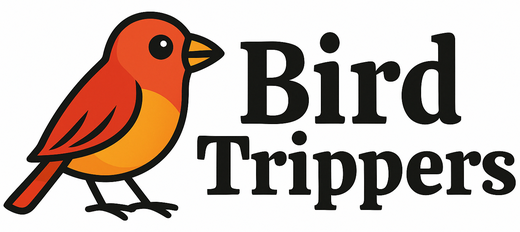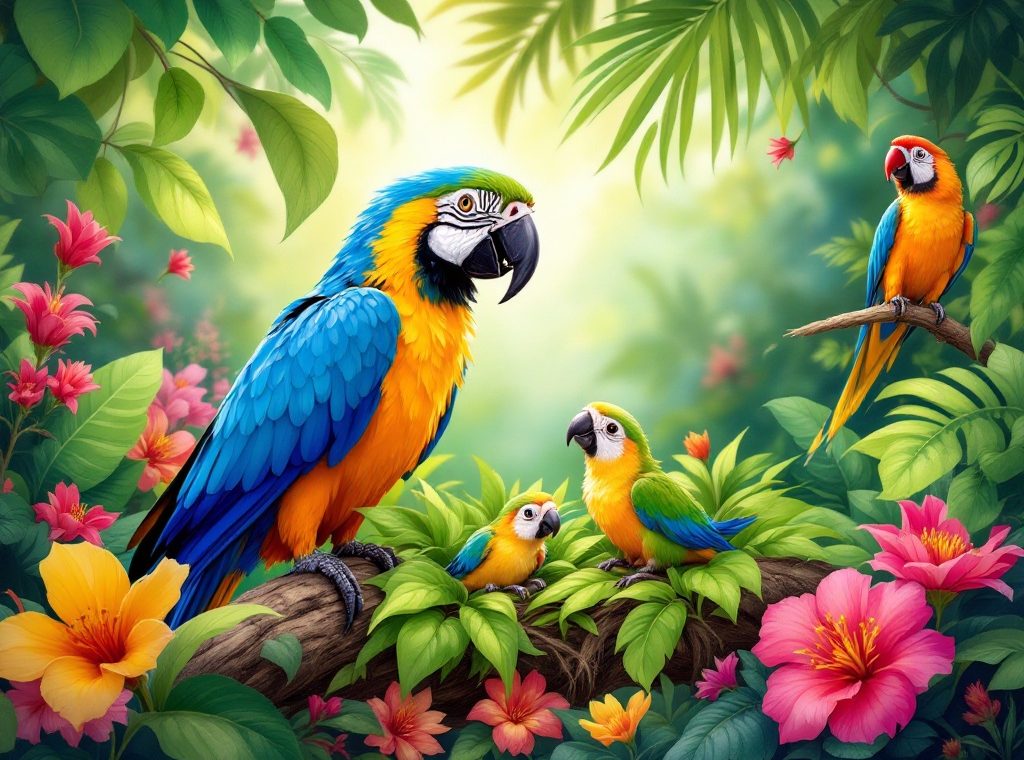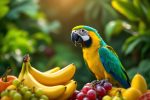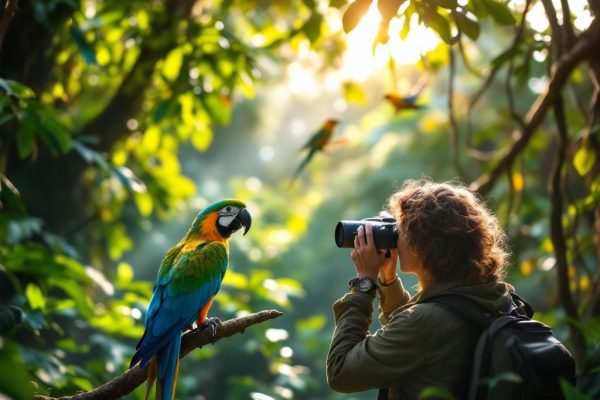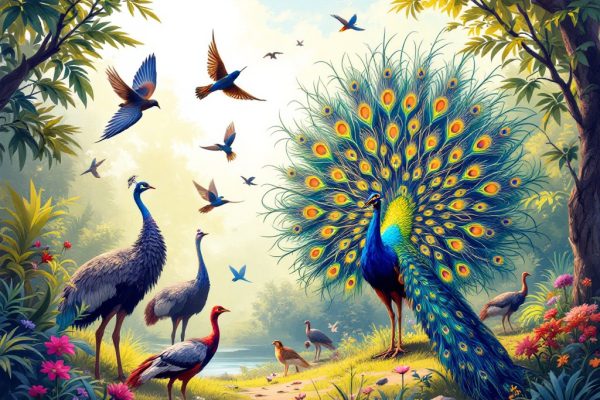Fun Facts About Parrots: Do You Know These Talkative Animals
Discover the captivating world of parrots, America’s fourth favorite pet! These intelligent birds, known for their vibrant plumage and mimicry skills, possess unique zygodactyl feet and powerful beaks perfectly adapted for climbing and cracking nuts. From the brilliant Blue and Gold Macaw to the tiny Pygmy Parrot, explore the fascinating characteristics and social complexities of these remarkable creatures. Learn why providing enrichment and interaction is crucial for their well-being and uncover the secrets of their “talking” abilities. Delve into the intriguing lives of parrots and unlock a deeper understanding of these intelligent and engaging companions. Read on to explore the wonders of the parrot world!
Important information
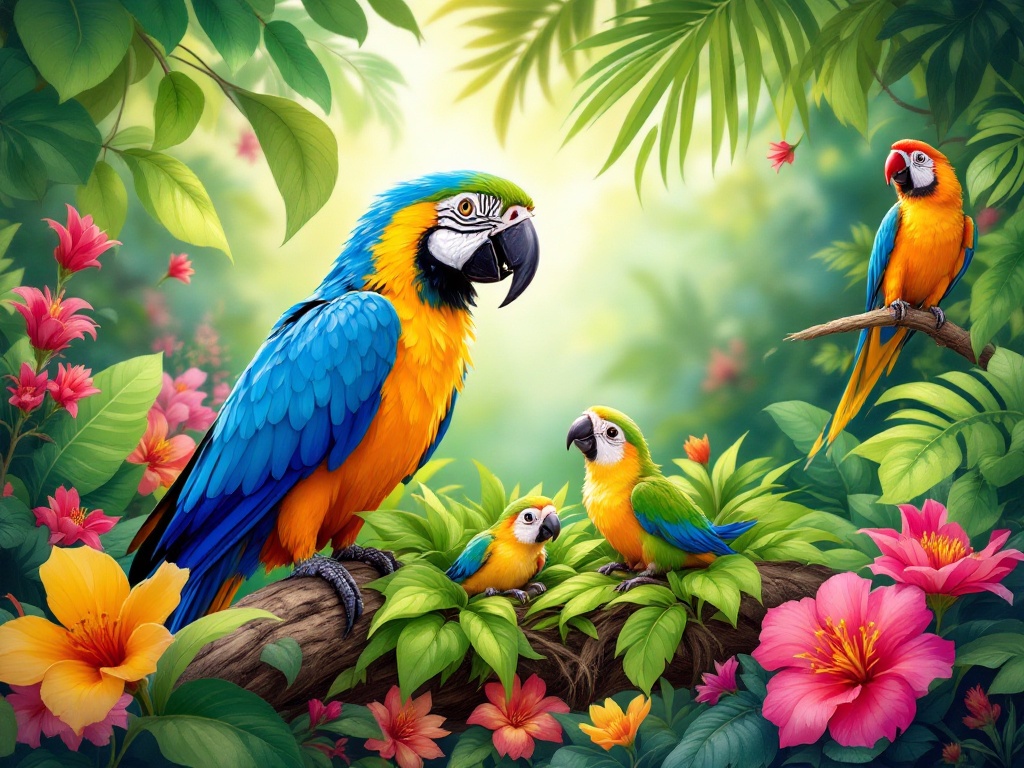
- Parrots are highly intelligent, capable of problem-solving and tool use, even rivaling dolphins and primates in cognitive ability.
- They are highly social birds, living in flocks and forming strong, often lifelong pair bonds. They communicate through varied vocalizations, body language, and even mimicry.
- Parrots possess unique physical traits, including strong, curved beaks for cracking nuts and seeds, and zygodactyl feet (two toes forward, two backward) providing excellent climbing and gripping skills.
- Though famous for mimicking human speech, parrots don’t truly “talk.” Their syrinx, a special vocal organ, allows them to copy sounds, but their communication is primarily instinctual.
- Parrots require significant attention and environmental enrichment to thrive. Without these, they can develop behavioral problems.
Fun Facts About Parrots: Do You Know These Talkative Animals?
Parrots captivate with their vibrant plumage and remarkable ability to mimic human speech and other sounds. These intelligent birds use their strong, curved beaks to crack nuts and seeds. Their unique zygodactyl feet, with two toes facing forward and two backward, provide excellent climbing and gripping abilities. Living in flocks, these social creatures communicate through a variety of calls, songs, and body language. Astonishingly, some parrot species can live for over 50 years, showcasing their resilience and making them remarkable members of the avian world.
What Makes Parrots Unique Among Pet Birds?
Parrots are remarkably intelligent, mimicking sounds with impressive accuracy. Their complex social interactions, including intricate flock behaviors and nuanced vocalizations, distinguish them from other pet birds. Their unique zygodactyl feet (two toes forward and two backward) provide exceptional climbing and object manipulation skills. Known for strong pair bonds, these birds exhibit a high degree of social complexity. Their intelligence shines through in problem-solving and tool use, making them engaging companions. However, this intelligence also necessitates considerable enrichment and attention for them to thrive.
Physical Characteristics
- zygodactyl feet (two toes forward, two backward) allow for exceptional climbing and object manipulation,
- strong beaks adapted for cracking seeds and manipulating objects,
- vibrant and varied plumage.
Behavioral Traits
- high intelligence demonstrated through problem-solving and tool use,
- complex social interactions, including intricate flock behaviors and nuanced vocalizations,
- strong pair bonds and a high degree of social complexity.
Psittacine: The Scientific Classification
Parrots are birds belonging to the Psittacidae family, a diverse group of psittacine species.
Parrots as America’s Fourth Favorite Pet
Parrots’ engaging personalities make them incredibly popular pets, ranking fourth in America. These captivating creatures offer truly interactive companionship.
High Attention and Enrichment Needs
Parrots need considerable attention and enriching environments to thrive. Without regular interaction and stimulating activities, they can become bored and develop behavioral problems. Consistent engagement is key to their well-being. Neglect can lead to various issues. Here’s why interaction and enrichment are so crucial:
Importance of Interaction
- prevents boredom and the associated behavioral problems,
- strengthens the bond between the parrot and its owner,
- allows for regular health checks and early problem detection.
Benefits of Enrichment
- stimulates their natural curiosity and intelligence,
- encourages physical activity and prevents obesity,
- provides opportunities to mimic natural behaviors like foraging and chewing.
What Are the Physical Characteristics of Parrots?
Parrots have remarkably strong legs and clawed feet, allowing them to easily grip branches and manipulate objects, especially food. Their powerful, curved beaks are perfect for cracking nuts and seeds. Famous for their vibrant colors, these birds display brilliant hues thanks to a unique feather pigment called psittacofulvin, which produces the yellows, oranges, and reds seen in many species. Their zygodactyl feet, with two toes pointing forward and two backward, provide an incredibly strong grip, enabling them to climb and perch with ease.
Strong Legs, Clawed Feet, and Curved Bills
Parrots have strong legs, allowing them to perch and climb easily. Their zygodactyl feet, with two toes pointing forward and two backward, provide excellent grip and object manipulation. Their powerful, curved bills are ideal for cracking nuts and seeds, while also being suited for eating fruit.
Psittacofulvin: The Unique Feather Pigment
Parrots are renowned for their strikingly vibrant plumage. These brilliant reds, oranges, and yellows are produced by psittacofulvin, a unique pigment found exclusively in parrot feathers. Other birds rely on different pigments for their coloration, setting parrots apart in the avian world.
Zygodactylous Feet: A Strategic Advantage
Parrots’ feet have a unique zygodactyl arrangement, with two toes facing forward and two backward. This specialized design makes them superb climbers, allowing them to effortlessly grip branches and hold food or toys. This remarkable adaptation also enables them to navigate the intricate world of trees and manipulate objects with impressive precision.
How Intelligent Are Parrots?
Parrots are incredibly intelligent, rivaling dolphins and primates in cognitive abilities. Studies have shown they can solve problems, use tools, and understand complex tasks. Their mimicry, pattern recognition, and grasp of concepts like numbers and colors make them engaging companions who thrive on mental stimulation.
Problem-solving Prowess
Parrots are exceptional problem-solvers, constantly seeking mental challenges. This inquisitive nature, coupled with their love for puzzles and interactive games, makes them enriching pets. Their captivating intelligence enhances their interactions with both their environment and their human companions.
Tool Use in Parrots
Both in the wild and in captivity, parrots demonstrate their intelligence through innovative tool use. They cleverly use sticks, stones, and other objects to obtain food, showcasing their cognitive understanding and adaptability. This ability highlights their resourcefulness and further distinguishes them as exceptionally intelligent birds.
Tool Use and Cognitive Understanding
Parrots are remarkable tool users, demonstrating impressive cognitive abilities and problem-solving skills. This highlights their intelligence, as shown by some parrots cleverly using sticks to extract insects from tree bark. This resourcefulness further underscores their remarkable adaptability.
Problem-Solving and Entertainment Value
Parrots are incredibly intelligent, solving puzzles and playing complex games. This makes them fun, engaging, and truly entertaining companions. They possess remarkable cognitive abilities, allowing them to learn tricks, mimic sounds, and even understand basic concepts. Their playful nature and social interaction needs make them enriching pets for those willing to dedicate time and attention. A well-cared-for parrot can bring years of joy and companionship to its owner.
Can Parrots Really Talk?
Parrots are renowned for their mimicry, though they don’t truly “talk”. Their syrinx, a vocal organ located at the base of the trachea, allows them to replicate human speech and a wide array of other sounds, including words and phrases learned from their environment and social interactions. While some studies indicate parrots may grasp word meanings rather than simply echoing noises, their communication remains primarily instinctual, based on learned associations instead of complex language. They don’t possess the true language abilities of humans.
Mimicking Abilities: More Than Repeating Sounds
Parrots, renowned for their mimicry, possess a unique vocal organ known as the syrinx. This remarkable ability isn’t mere repetition. These intelligent birds understand complex communication within their flocks. Their calls serve various purposes:
- individual identification,
- strengthening social bonds,
- issuing warnings of danger.
Mimicking human speech also plays a crucial role, fostering social connections with their human companions. This behavior showcases not only their intelligence but also their impressive adaptability.
Understanding Context and Holding Conversations
Parrots are known for their remarkable intelligence, capable of engaging in simple conversations. They demonstrate an understanding of context, responding to their owners in meaningful ways. This highlights their impressive communication abilities, solidifying their status as truly bright creatures.
Anatomy of Parrots’ Speech: Trachea and Syrinx
Parrots produce sound using a specialized vocal organ known as the syrinx, situated at the point where the trachea divides into the lungs. Unlike humans who utilize vocal cords, parrots manipulate the membranes and muscles of the syrinx to regulate sound. They can additionally adjust these sounds by altering the shape of their trachea.
Parrots vs. Nonparrot Species in Mimicry
Parrots have a remarkable talent for learning new sounds, a skill not found in most other birds. Their mimicry of human speech is particularly striking, but they can also imitate a variety of other noises. This ability comes from unique structures in their throats and brains, allowing them to reproduce a broad spectrum of sounds for communication and social interaction. Other birds, without these adaptations, have a much smaller range of vocalizations. This distinction truly makes parrots exceptional.
How Do Parrots Bond and Socialize?
Parrots, highly social birds, forge strong lifelong bonds with their partners. These vibrant creatures congregate in large, sometimes boisterous flocks known as pandemoniums. Within these gatherings, constant communication thrives through a diverse range of vocalizations, from warnings and mating calls to a variety of other expressions. Body language, including feather positioning and head tilting, also conveys crucial messages. Essential social interactions, such as preening and play, strengthen flock cohesion and ensure each parrot’s well-being. Ultimately, connection is key to a parrot’s thriving existence.
Monogamous Pair Bonds and Flock Behavior
Parrots are renowned for their vibrant plumage and often form lifelong monogamous pairs, a testament to their loyalty. This strong pair bonding shapes their complex social interactions within flocks. These flocks offer several advantages:
- protection from predators,
- enhanced foraging success,
- opportunities for social learning.
Cooperative breeding, also known as alloparenting, is common, with other adults assisting parents in raising their young. Parrots employ a diverse vocal repertoire of calls, songs, and even mimicry to communicate within these bustling communities. Their remarkable sociality makes them truly fascinating creatures.
Pandemonium: The Social Dynamics of Parrots
Parrots are highly social creatures, thriving in flocks filled with vibrant sounds and movements. Their communication is a diverse mix of calls, songs, and even mimicry. Body language is key, with postures, feather displays, and head bobs conveying various messages. Mutual preening, food sharing, and playful interactions strengthen their social bonds. This constant activity creates a dynamic social structure within the flock.
Communication and Vocalizations in Parrot Groups
Parrots, highly social creatures, communicate using a wide range of squawks, whistles, and other vocalizations. These calls convey vital messages, from predator warnings to mating calls. Beyond sound, parrots use body language, such as ruffling their feathers and positioning their wings, to enhance communication. These combined methods strengthen social bonds and maintain group cohesion. Their playful mimicry also serves a crucial social function within the flock.
What Are Some Remarkable Species of Parrots?
Blue and Gold Macaws, with their vibrant blue and yellow feathers, are large parrots native to South America.
Rainbow Lorikeets, medium-sized Australian parrots, boast a vibrant rainbow of plumage.
Rose-Ringed Parakeets, easily identified by their green plumage and rose-colored neck rings, reside in Asia and Africa.
The small, bright green Quaker Parakeet, or Monk Parakeet, hailing from South America, is renowned for its unique nest-building skills, constructing large nests of sticks.
The smallest parrot species, the Pygmy Parrot, inhabits New Guinea and its surrounding islands.
The Nocturnal Parrot of New Zealand stands apart, being a ground-dwelling, nocturnal bird.
Blue and Gold Macaw, Quaker Parakeets, and Rainbow Lorikeet
Blue and Gold Macaws, native to South America, are large parrots known for their vibrant blue and gold plumage.
Quaker Parakeets, also called Monk Parakeets, are small, bright green South American parrots renowned for their adaptability and intricate nest-building skills.
Rainbow Lorikeets, medium-sized Australian parrots, boast stunning multicolored feathers and specialized brush-tipped tongues for feeding on nectar and pollen.
Pygmy Parrot and Rose-Ringed Parakeets
The Buff-faced Pygmy Parrot holds the distinction of being the world’s smallest parrot, measuring a mere 8 centimeters and weighing only 10 grams.
This tiny bird resides in the forests of New Guinea and its surrounding islands.
In stark contrast, the Rose-ringed Parakeet (also known as the Ring-necked Parakeet) is significantly larger, averaging 40 centimeters in length and weighing approximately 120 grams.
Male Rose-ringed Parakeets are easily recognized by their striking green plumage and the distinctive rose-colored ring around their necks. These birds are native to Africa and Asia.
Nocturnal Parrot and Its Unique Behavior
The nocturnal parrot, or night parrot (Pezoporus occidentalis), is a remarkable anomaly in the parrot world, active only after dark. This elusive bird makes its home in the sparsely vegetated spinifex grasslands of Australia. Under the cover of night, it forages for seeds and grasses. This survival strategy is highlighted in research like a 2017 study published in Australian Zoologist. Its camouflage and nocturnal habits are key to thriving in this harsh, arid landscape.
